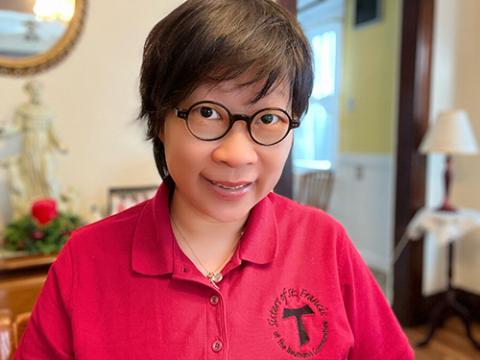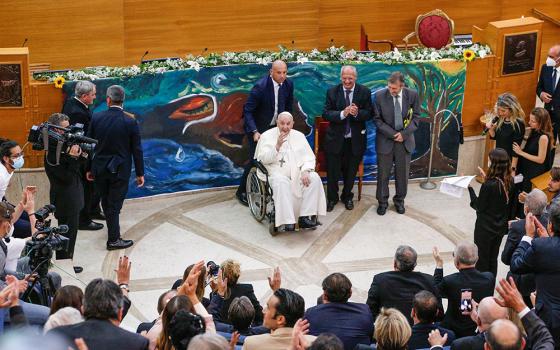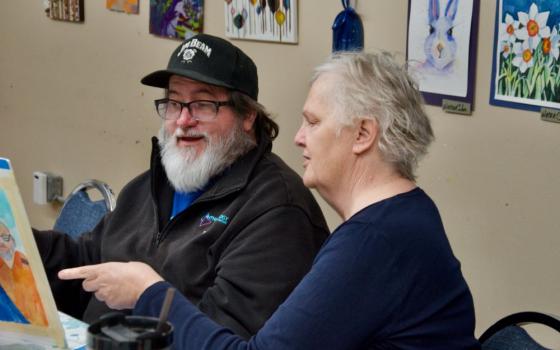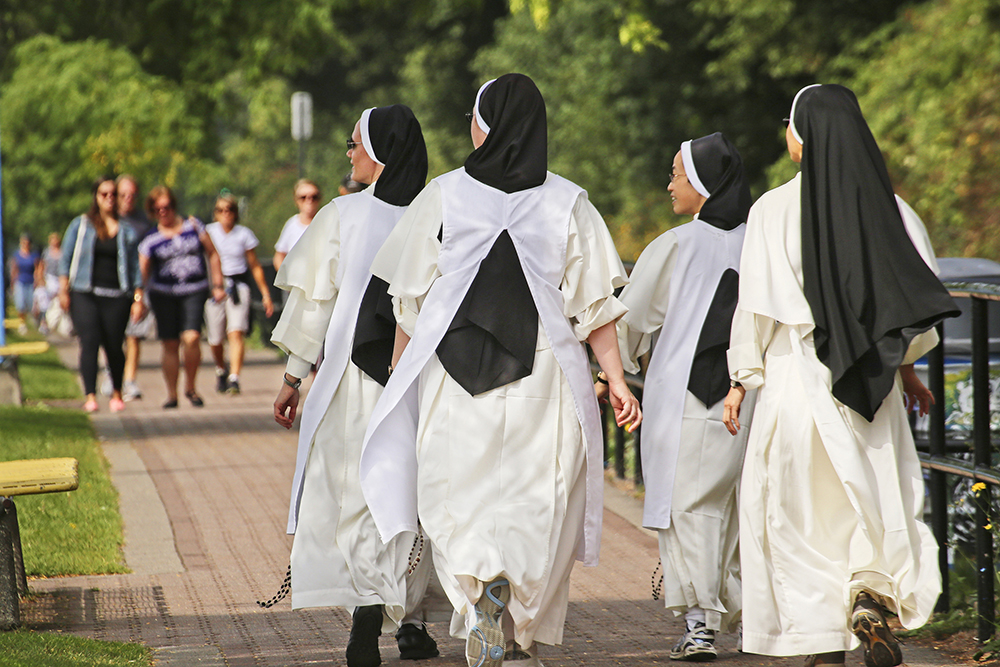
(Photo by Lori Lo/Pixabay/Creative Commons)
Sr. Maria Angeline Weiss recalls her choice to embrace the religious life of a Catholic sister as fairly straightforward. As a 16-year-old Catholic high schooler in Allentown, Pennsylvania, she was drawn to the "joy and her simplicity" of one of the nuns who taught at the school "and her love of prayer."
That teacher belonged to an order called the Sisters of Christian Charity. When Weiss, now 35, visited one of the order's convents, she said, "I very quickly felt like I was at home." Weiss entered a Sisters of Christian Charity community at the age of 18.
But for Sr. Madeleine Davis, who has taken her initial vows in Sisters of Christian Charity, the path has been more circuitous.
Advertisement
Growing up in an evangelical Protestant family in northern Illinois, Davis — then Abigail, before she took her religious name of Madeleine — didn't know much about Catholicism. But when she was in high school her brother, inspired by the writings of the early church fathers, converted. On his visits home from college, they began to have long conversations about faith. A few years later, Davis was hospitalized after a car accident, and a Catholic chaplain dropped by to see her. Though a brief encounter, she said, she experienced the love of Christ through him and decided to embrace the Catholic faith.
"Before becoming a Catholic," said Davis, now in her early 30s, "I felt like my life was empty. I was just doing what was expected of me, and I didn't even want it all that much."
Her story is familiar to Sr. Mary O'Donovan, vocation director for the Carmelite Sisters for the Aged and Infirm. In a time when Christianity is on the decline and the religiously unaffiliated, known by pollsters as "nones," are on the rise, "a lot of young people don't have meaning in life," said O'Donovan.
"There is a very great hunger out there. They're really searching. Some know what they are searching for. Some don't. Sometimes they are just waiting to be asked, 'Did you ever think of religious life?'"
Nobody asked Davis. Not long after her conversion, however, "all of a sudden, the idea came to me: Well, you could be a sister," she said.
The problem? She wasn't sure religious sisters were still a thing. Having found, on Google, that they were, she began to contemplate the idea seriously.
Her misgivings revolved mostly around the idea of forfeiting motherhood. "So, I started praying, and asking God: 'If you want me to be a sister, help me to want it too.' "
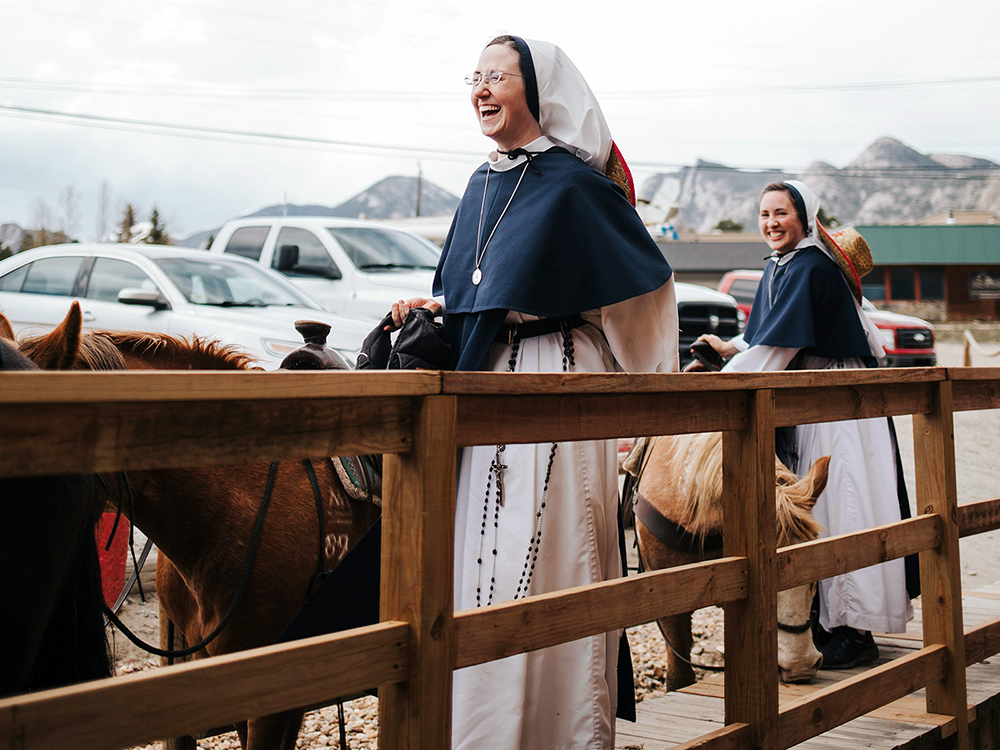
(Photo by Anna Hecker/Unsplash/Creative Commons)
Another obstacle was her parents. While they weren't bothered about her joining the Catholic Church, "becoming a sister was a much bigger deal," said Davis. "They were so upset." (They are now on good terms.)
Eventually, after living for a time with a community of religious contemplatives in New Mexico, Davis, working at a local crisis pregnancy center and as a volunteer caregiver for the elderly, realized she was on the right path, she said. "I was so happy, even though I was busy and tired. I loved what I was doing," she said. "It was then that I realized the way I was trying to serve looked a lot more like a Sister of Christian Charity."
Though they took different routes to the religious life, Davis and Weiss are representative in their own ways. A 2022 report by Georgetown University's Center for Applied Research in the Apostolate showed that 77% of men and women who took vows were attracted by their orders' charism, or mission. Some 70% also said they were attracted by the community's prayer life. Other top draws were the prospect of living in community and the habit, or distinctive clothing.
From 2020 to 2022, more than 900 women and men entered religious life in the U.S. Of that number, 403 were women, said Sr. Debbie Borneman, director of member relations and services at the National Religious Vocation Conference, a professional organization for vocation directors.
Last year, according to CARA's report on those making perpetual vows, 87% of respondents (not everyone responded) said they had no one professing perpetual vows. Four percent reported having two to 15 members, for a total of 144 men and women in 2023.
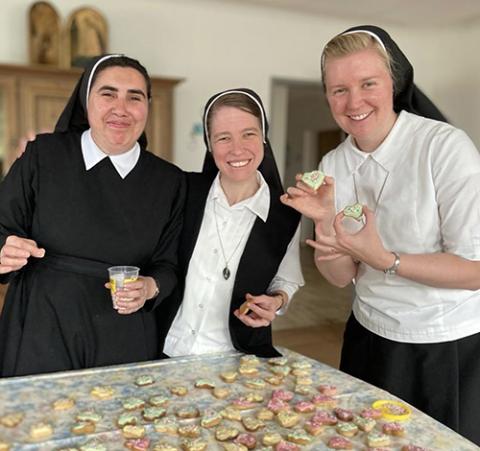
Sr. Maria Angeline Weiss, right, with fellow Sisters of Christian Charity in July 2023 in Paderborn, Germany. (Photo courtesy of the Sisters of Christian Charity)
Weiss said about 12 women attended her order's "come and see" retreats, held throughout the year, in 2023.
A serious inquirer meets with a vocation director, visits different communities before applying to one, and if accepted becomes a postulant. (The names of the steps differ from one order to the next.) Postulants move in, but take no vows, and typically keep their job and their credit cards and pay their taxes. After six months to two years, they become a novice and are received into the community, and a year or more later they profess their vows, but only for a year at a time. It may take as long as nine years before their perpetual, or final, profession.
In each stage, the new sisters conform to life in community housing an average of 50 other people, though some are smaller and some much larger, according to the National Religious Vocation Conference. The shared life that was a draw for some often turns out to be the biggest challenge.
Friction can arise over such prosaic issues as when and where it's appropriate to use a cellphone, said Sr. Jill Reuber, vocation director for the Benedictine community of sisters in Ferdinand, Indiana. Her congregation of approximately 100 sisters, ranging in age from 33-99, has had many community meetings devoted to the topic of bridging generation gaps, she said.
Only 13% of sisters, priests and brothers who have taken final vows are under 60, according to figures provided by the National Religious Vocation Conference. The same percentage are 90 or older (Catholic nuns have been studied as models of successful aging).
When she hears older sisters say, "Oh, she's always on her phone," said Borneman, who belongs to the Order of Saints Cyril and Methodius, she pushes back, asking, " 'Would you be just as willing to turn off the television for a day or a week?' Moderation is the key regardless of the screen we use most often."
Worship styles can be another source of tension, Reuber said, noting that it is often newcomers who want the most traditional rites. "Younger sisters want to return to Eucharistic Adoration," she said, referring to a ritual in which the consecrated host, considered the true presence of Christ, is prayed to over the course of a day. "Older sisters don't always understand."
As orders become increasingly ethnically and racially diverse, community life also requires navigating cultural differences that older women of mostly European descent rarely faced.
Sr. Maisie Ng, a second-year novice in the Sisters of St. Francis, moved to Chicago to participate in the InterCongregational Collaborative Novitiate, where small orders house and educate their novices together. A native of Hong Kong who had lived in Toronto, she had to adapt at the novitiate to living for almost a year with six women, all of them from different backgrounds and all under the stresses of adjusting to community life.
Though there were "difficult conversations," the novices eventually learned to trust one another, she said. Along with the other house residents, she learned communication skills that would help her when she returned to her less diverse congregation, she said. Her training in nonviolent communication has been particularly helpful.
Complicating all of these interactions is some new sisters' relative lack of exposure in their previous lives to the concept of religious life. Sometimes inquirers know almost nothing about what to expect, said some vocation directors.
Some wonder whether the young women becoming nuns will change religious life or whether the life will change them. Katherine Dugan, associate professor of religious studies at Springfield College and author of Millennial Missionaries: How a Group of Young Catholics Is Trying to Make Catholicism Cool, wonders whether the Generation Z nuns joining now are in the sisterhood for life, or whether they see it as a shorter commitment.
"We're at a crux moment," Dugan said. "The future of religious life is sort of up for debate. It will be really interesting to see what the next 20 years brings."
As Davis studies for a degree in teaching high school Spanish, she is happy to be serving her congregation and God and is focused on the present. "I love my life," she said. "I'm so glad for what I get to do, and who I get to be. If I'm fulfilling what I'm supposed to be doing, that's all God really wants … to be faithful to what's in front of me."

